By Carl Conetta, 7 Nov 2017; updated 25 Oct 2020
Expanded excerpt from “Disappearing the Dead: Iraq, Afghanistan, and the Idea of a ‘New Warfare,’ 18 February 2004 (pdf).
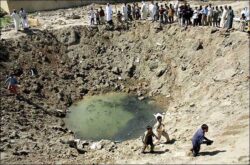 Even given perfect intelligence and accuracy, most guided weapons in the 500- to 2000-lb range are sufficiently powerful to routinely cause some degree of collateral damage. This, because they carry hundreds of pounds of enhanced high-explosives wrapped in hundreds of pounds of steel – an obvious point, but one that has been too often occluded or overlooked.
Even given perfect intelligence and accuracy, most guided weapons in the 500- to 2000-lb range are sufficiently powerful to routinely cause some degree of collateral damage. This, because they carry hundreds of pounds of enhanced high-explosives wrapped in hundreds of pounds of steel – an obvious point, but one that has been too often occluded or overlooked.
A 2,000-lb bomb typically contains 945 pounds of tritonal, a TNT derivative that is about 20 percent more powerful than TNT. By comparison, the bomb that destroyed the Murrah Federal Building in Oklahoma City on 19 April 1995, comprised approximately 5,000 pounds of ammonia nitrate mixed with fuel oil — the equivalent of nearly 4,000 pounds of TNT. The portable devices used by suicide bombers typically weigh between 10 and 35 pounds; these can carry a punch equivalent to 40 pounds of TNT if a plastic explosive (C-4) is used.
Most everything will be severely damaged, injured, destroyed, or killed within 20 meters of a 500-lb bomb blast and 35 meters of a 2000-lb blast. This lethal radius can be partly mitigated by detonation inside a large, compartmentalized building – however, as a Rand study points out: “While structures surely have some shielding effect, building collapse and spalling are secondary yet major causes of injury.” (pdf)
Averaged across different types of surfaces, a 2000-lb bomb will carve a crater 50 feet across and 16 feet deep; a 500-lb bomb will carve one 25 feet across and 8.5 feet deep. The probability of incapacitating injury to unprotected troops within 100 meters of a 2000-lb bomb blast in the open is 83 percent; for those between 100 and 200 meters it is 55 percent. (pdf)
Safe distances for unprotected troops are approximately 1,000 meters for 2000-lb bombs and 500 meters for 500-lb ones. Even protected troops are not entirely safe within 240 meters of a 2,000-lb bomb or 220 meters of a 500-lb bomb. [For sources and more information on blast effects see the note at bottom.]
It is considered bold for a combat controller to bring down a strike within 800 meters of his/her position, and the 2001 Afghan strike that killed eight coalition troops and injured Hamid Karzai and 20 others is attributed to a JDAM hit within 100 meters of their position. Commenting on the Karzai incident Rear Adm. John Stufflebeem of the Joint Staff rightly described the 2000-lb JDAM as a “devastating weapon”, adding that, “As a pilot, when I would drop a 2,000-lb weapon, I wanted at least 4,000 feet of separation from that weapon when it went off.” This distance would put an aircraft just beyond the reach of shrapnel and flying debris.
The brute destructive power of these weapons is not ancillary to the recent success of so-called precision attack, but central to it. A critical threshold in the development of US capabilities was passed when improvements in accuracy and precision helped insure that 50% or more of the weapons dropped would hit close enough to their targets so that the latter would be encompassed by the weapon’s destructive footprint. Of course, the area of deadly destruction is not small, but large – more than a acre for 2000-lb bomb. And this big footprint is pivotal to the success of “precision weapons.” An appropriate analogy is not a sharpshooter’s rifle shot, but a well-aimed double-barreled scatter gun firing a hail of slugs. In a sense, “precision” depends on which end of the weapon’s trajectory one sits.
Also relevant to the impact of “precision warfare” is the sheer number of bombs used since 2001: more than 70,000 in Afghanistan and more than 150,000 in Iraq and Syria (US munitions only). (See note at bottom for sources of bombing totals.)
It is certainly true that improvements in the accuracy and precision of air-dropped munitions has greatly reduced the numbers of aircraft and weapons required to destroy targets. Compared to bombing efforts during the Vietnam war era, it might take only 1/8 as many aircraft and 2% as many weapons to destroy a target today. A corollary of this is a capacity to significantly reduce the extent of death and destruction collateral to a bombing run. But capacity doesn’t necessarily determine actual outcomes, measured broadly. Several other variables weigh in:
(1) Does improved targeting lower the threshold for going to war and, thus, increase the frequency of wars and aggregate war fatalities?
(2) Does improved targeting encourage attacks on targets that carry a greater inherent or baseline risk of substantial collateral death and destruction? That is, do advanced air forces spend down “improved safety” by attacking less safe targets? And,
(3) Does improved targeting better enable attackers to comprehensively collapse an enemy nation’s government and critical infrastructure, producing fatal chaos on a wide scale.
The answer to all three queries is “yes” – and this upends the mystique of so-called “precision warfare.” America’s post-9/11 wars have not been low casualty events. To address the questions posed above in turn:
(1) Since the end of the Cold War, the USA has conduced air campaigns, some protracted, in a dozen nations – all outside the context of superpower contention, none involving existential threats, and most with only tenuous, remote, or indirect connection (if any) to attacks on US assets. Counter-terrorism efforts, once the province of discrete Special Operations units, have become a major employer of guided bombs in large quantities.
(2) Hubris, complex environments, and the fog of war have led to numerous, deadly “precision strikes” on wrong targets including attacks in residential neighborhoods, city centers, crowded towns, and government complexes resulting in many hundreds of civilian dead. Also mistakenly hit were mosques, hospital complexes, refugee encampments, farm workers, wedding parties, and even a neutral foreign embassy – this latter with potential strategic consequences. None of these strikes might have been attempted except for undue confidence in the promise of “precision warfare.”
(3) By any measure, US forces in Iraq and Afghanistan relied more on guided-weapons than ever before, quickly disintegrating governments in both places. And yet the product of these rapid victories was humanitarian crisis and chronic chaos. The same is true for operations in Libya, which have fed conflict across the Sahel. Indeed, with the partial exception of the mid-1990s intervention in the Bosnia-Herzegovina conflict, none of America’s post-Cold War military operations produced conditions of reliable stability or security. As for the cost in lives of the war and chaos unleashed by “precision” victory: 160,000 dead in Afghanistan and 300,000 dead in Iraq – and still counting. This is the standard by which precision warfare should be judged.
Sources on blast effects and safe distances:
- FM 3-09.31 Fire Support for the Combined Arms Commander (Fort Sill, OK: US Army Field Artillery School, 1 Oct 2003), “Appendix D: CAS Capabilities and Limitations”
- Close Air Support Newsletter No. 98-13 (Fort Leavenworth KS: US Army Combined Arms Center Center for Army Lessons Learned, 1998), “Appendix B: NTC CAS ROE”
- Vernon Loeb, “An Unlikely Super-Warrior Emerges in Afghan War; U.S. Combat Controllers Guide Bombers to Precision Targets,” Washington Post, 19 May 2002
- David Wood, “New Workhorse of US Military: A Bomb With Devastating Effects,” Newhouse News Service, 12 March 2003.
On blast effects also see:
- Explosive Weapon Effects Overview (Geneva International Centre for Humanitarian Demining, Feb 2017)
- Explosive Weapons in Populated Areas: Technical considerations relevant to their use and effects (West Perth, Australia: Armament Research Services, May 2016)
- Areas of Harm: Understanding explosive weapons with wide area effects (London: Article 36; Utrecht: PAX, 2016)
US Bombing Data, Afghanistan, Iraq, Syria – 2001-2020:
- “Air Power Summaries,” US Air Forces Central, HQ, Shaw Air Force Base, South Carolina (accessed 25 Oct 2020)
- Combined Forces Air Component Commander, 2007-2010 Airpower Statistics (Shaw Air Force Base, South Carolina: USAFCENT Public Affairs Directorate, 30 Aug 2010)
- Anthony H. Cordesman, US Airpower in Iraq and Afghanistan: 2004-2007 (Washington DC: Center for Strategic and International Studies, 13 Dec 2007). PDF
- Operation Iraqi Freedom – By The Numbers (Shaw Air Force Base, South Carolina: USCENTAF Assessment and Analysis Division, 30 Apr 2003)
- Carl Conetta, “Operation Enduring Freedom: Why a Higher Rate of Civilian Bombing Casualties,” Project on Defense Alternatives Briefing Report #13 (Cambridge MA: 24 Jan 2002)

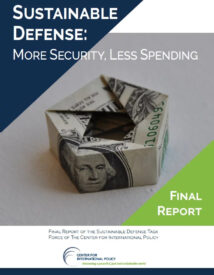

 Although Duterte had a reputation as an effective (if crude) mayor of Davos, he began his 2016 campaign with no strong political base outside his home island of Mindanao. He lacked the support of either a major political party or a substantial chunk of the Philippine oligarchy (outside Mindanao, at least). His electoral coalition was a hodge-podge of smaller, mostly conservative-nationalist formations but also religious groups and some leftists.
Although Duterte had a reputation as an effective (if crude) mayor of Davos, he began his 2016 campaign with no strong political base outside his home island of Mindanao. He lacked the support of either a major political party or a substantial chunk of the Philippine oligarchy (outside Mindanao, at least). His electoral coalition was a hodge-podge of smaller, mostly conservative-nationalist formations but also religious groups and some leftists.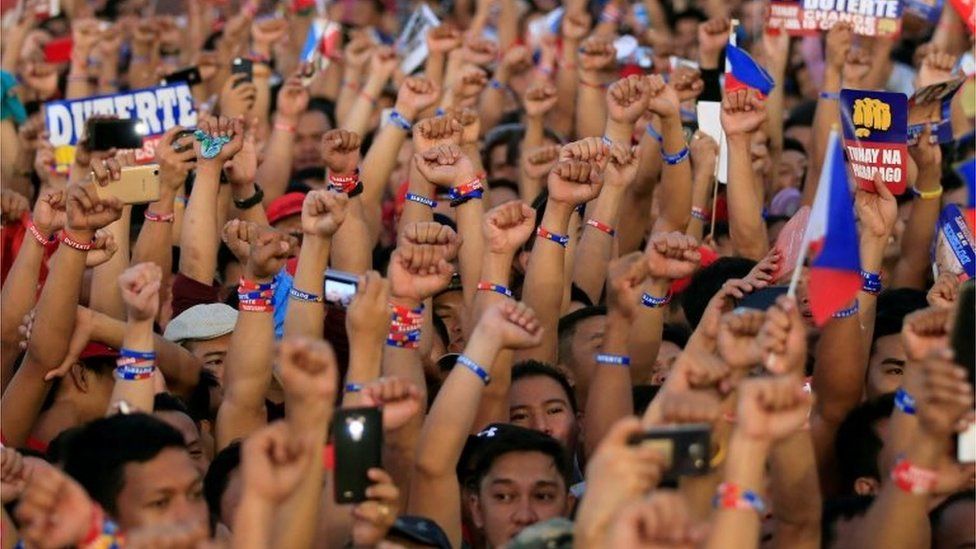


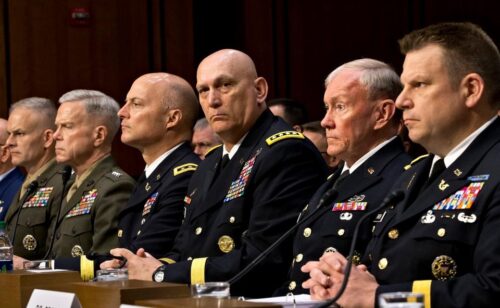

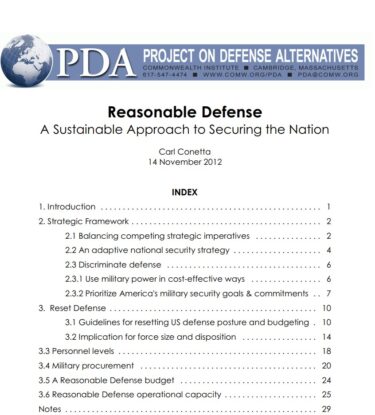 Argues for a new balance among the various instruments of national power reflecting today’s strategic conditions. Taking a realistic view of security needs, the report advocates a military 20% smaller than today’s. It advances a “discriminate defense” strategy that would focus the military on cost-effective missions and save $550 billion more than official plans over the next decade.
Argues for a new balance among the various instruments of national power reflecting today’s strategic conditions. Taking a realistic view of security needs, the report advocates a military 20% smaller than today’s. It advances a “discriminate defense” strategy that would focus the military on cost-effective missions and save $550 billion more than official plans over the next decade. Drawing on the experiences of the Afghanistan and Iraq wars, the article assesses the role played by helicopters, reviewing their strengths and limits. The author suggests that a dilemma shadows the use of these aircraft. On the one hand, they offer a unique combination of mobility, flexibility, and agility in working closely with ground forces, providing reconnaissance, fire, maneuver, and logistical support. However, helicopters prove acutely sensitive to environmental conditions, are relatively fragile, and can be countered by multiple, relatively-inexpensive weapon systems.
Drawing on the experiences of the Afghanistan and Iraq wars, the article assesses the role played by helicopters, reviewing their strengths and limits. The author suggests that a dilemma shadows the use of these aircraft. On the one hand, they offer a unique combination of mobility, flexibility, and agility in working closely with ground forces, providing reconnaissance, fire, maneuver, and logistical support. However, helicopters prove acutely sensitive to environmental conditions, are relatively fragile, and can be countered by multiple, relatively-inexpensive weapon systems.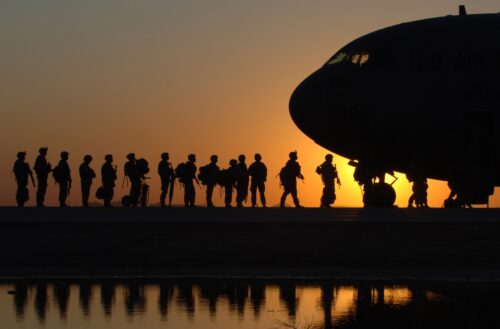
 In the early years of the post-Cold War era, the US defense establishment set out to formulate a new military posture. This was supposed to reflect the new strategic environment and pursue the opportunities afforded by advances in information technology. The result, however, was a “new” posture closely resembling the old, writ somewhat smaller. It was to be progressively bolstered by cutting-edge technology inputs. However, while remarkably expensive, these inputs would only partially fulfill their promise, while exhibiting varying degrees of reliability and sustainability. Soon the USA would be spending as much and more inflation-adjusted dollars on its armed forces as during the Cold War. Also driving requirements and budgets upward would be the adoption of new strategic goals, roles, and missions exceeding those of the Cold War period.
In the early years of the post-Cold War era, the US defense establishment set out to formulate a new military posture. This was supposed to reflect the new strategic environment and pursue the opportunities afforded by advances in information technology. The result, however, was a “new” posture closely resembling the old, writ somewhat smaller. It was to be progressively bolstered by cutting-edge technology inputs. However, while remarkably expensive, these inputs would only partially fulfill their promise, while exhibiting varying degrees of reliability and sustainability. Soon the USA would be spending as much and more inflation-adjusted dollars on its armed forces as during the Cold War. Also driving requirements and budgets upward would be the adoption of new strategic goals, roles, and missions exceeding those of the Cold War period.